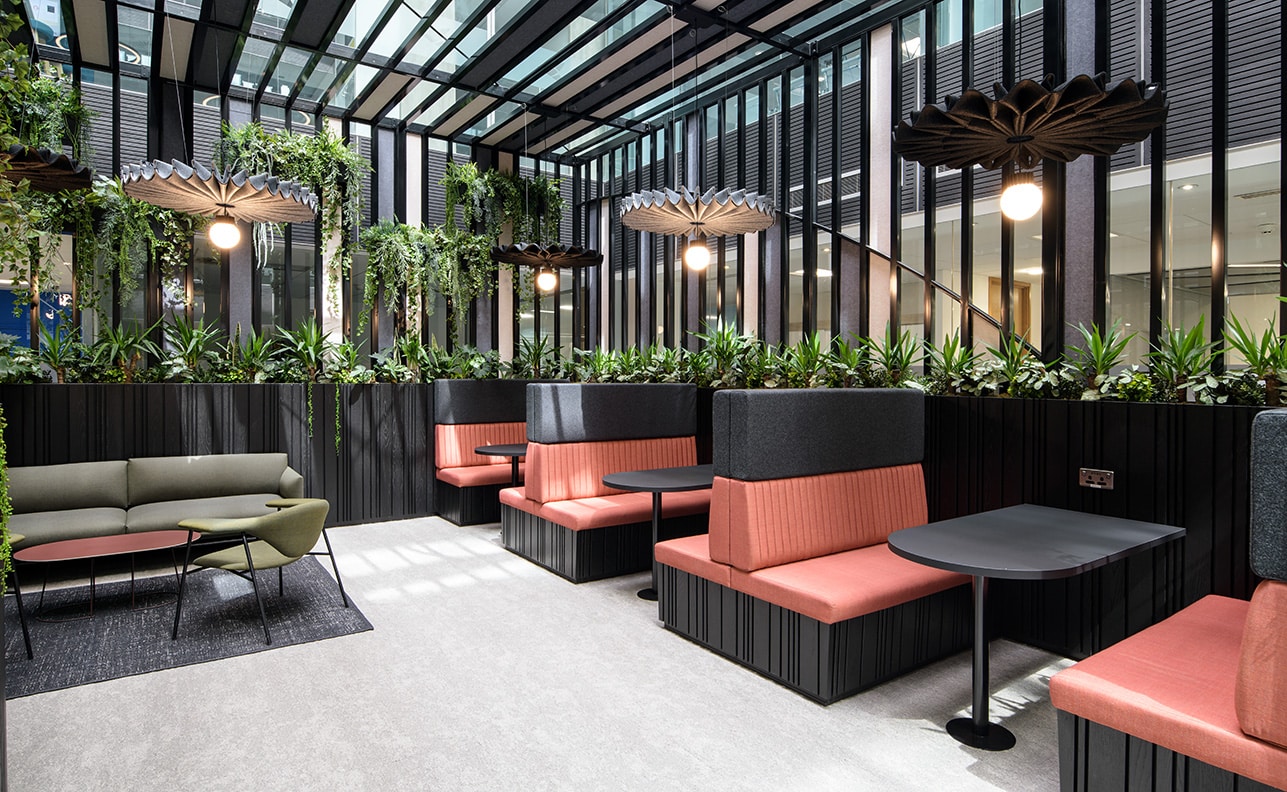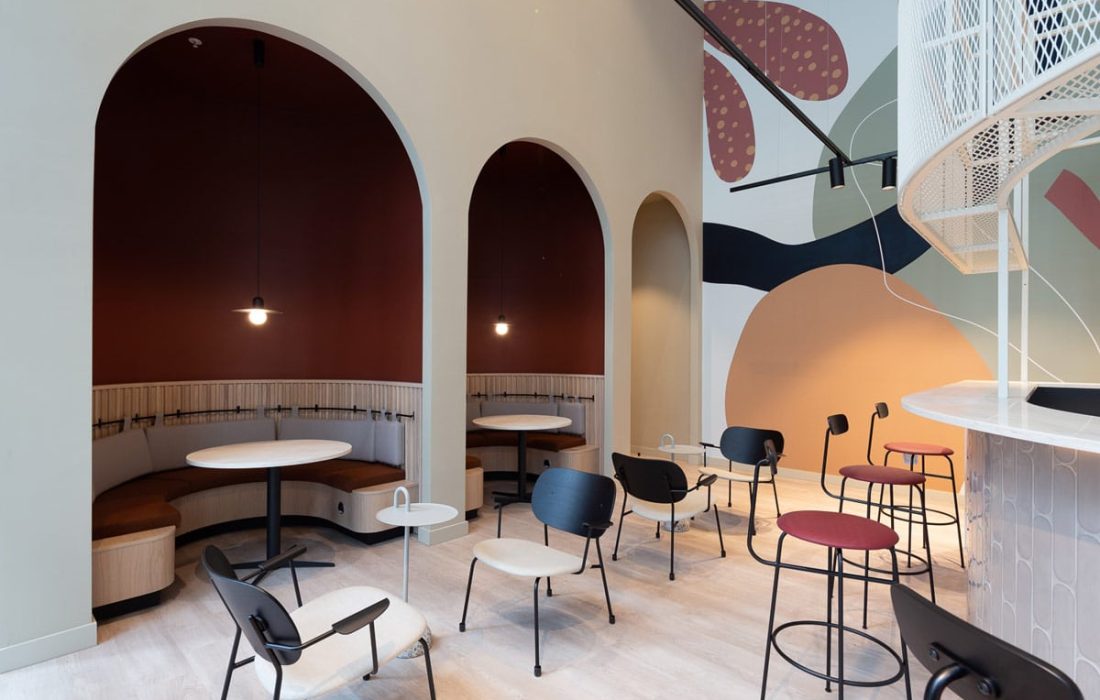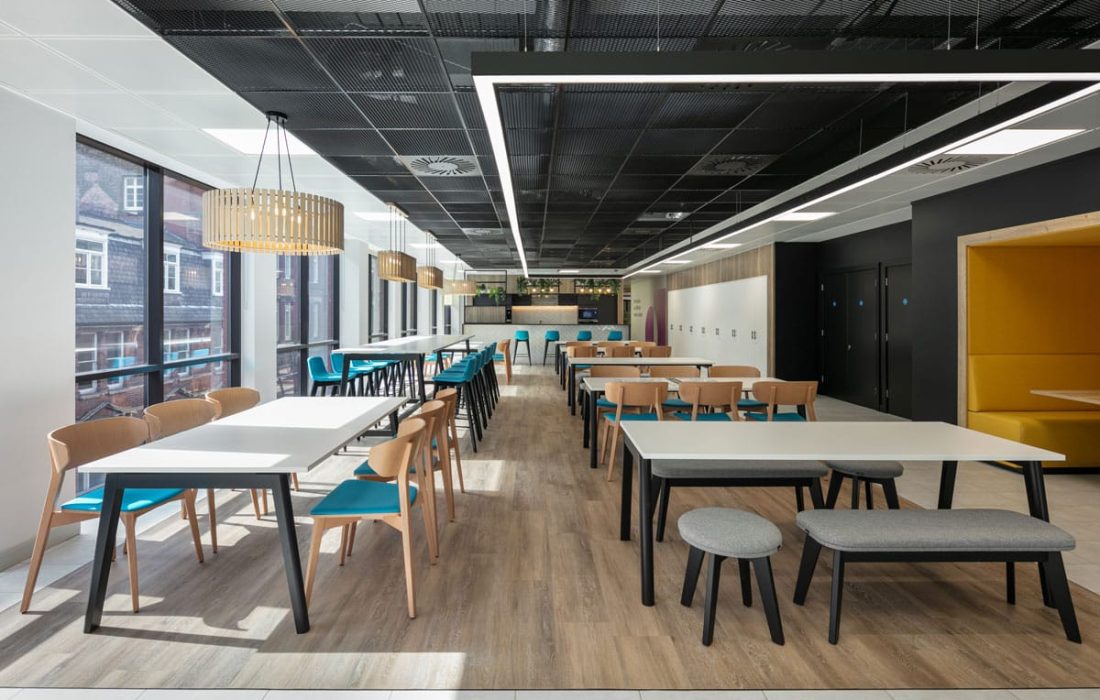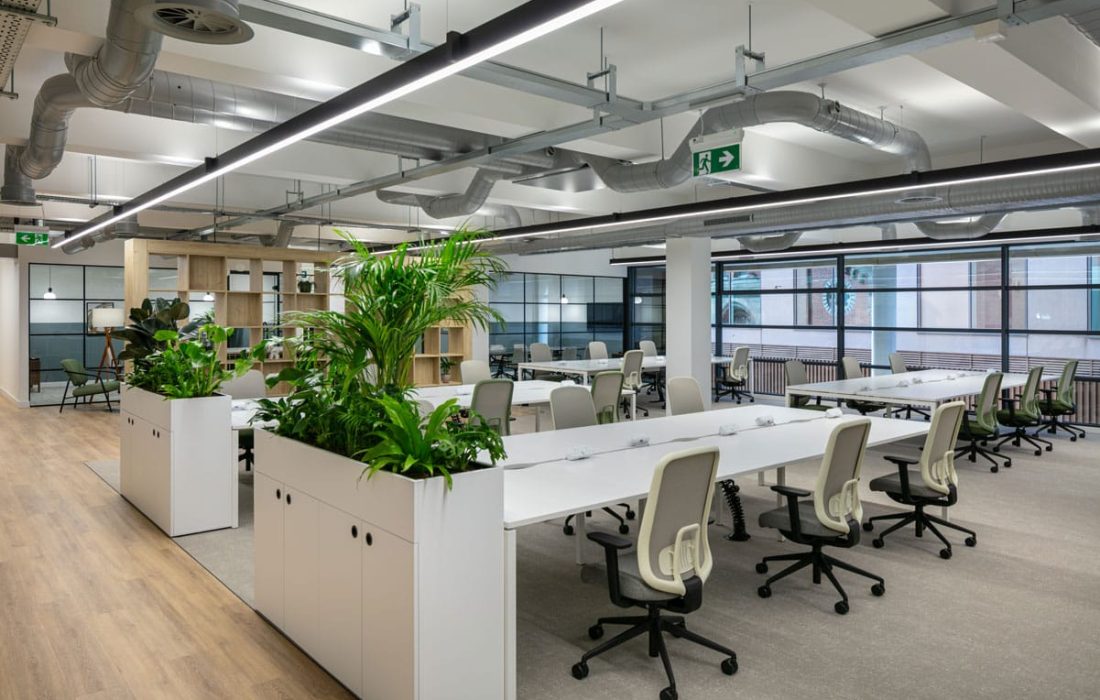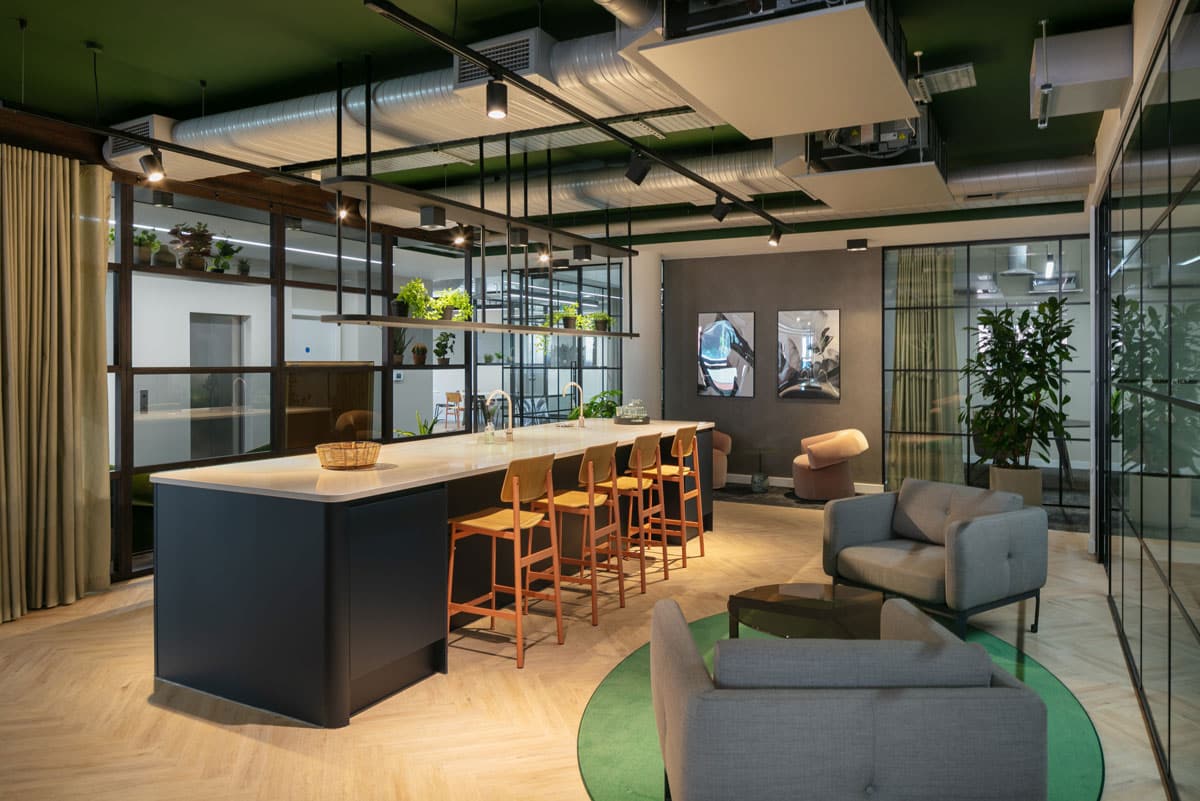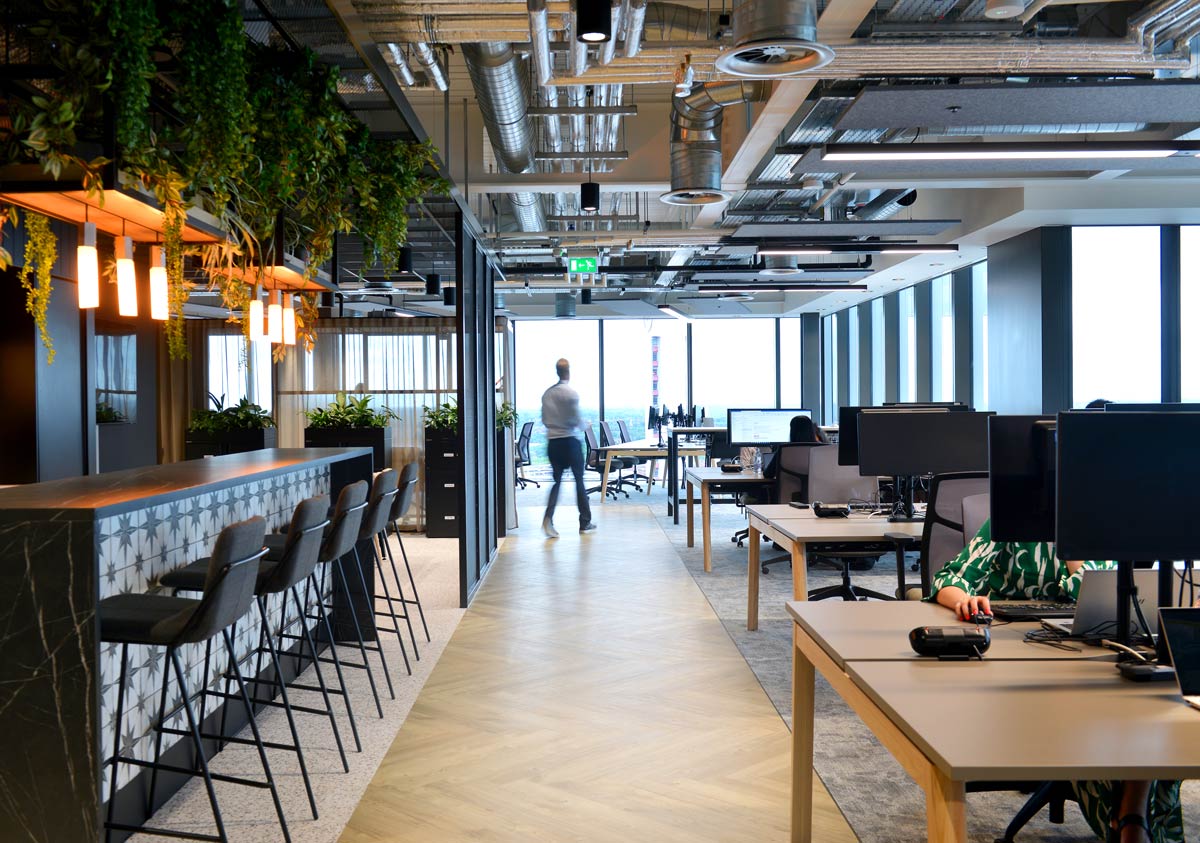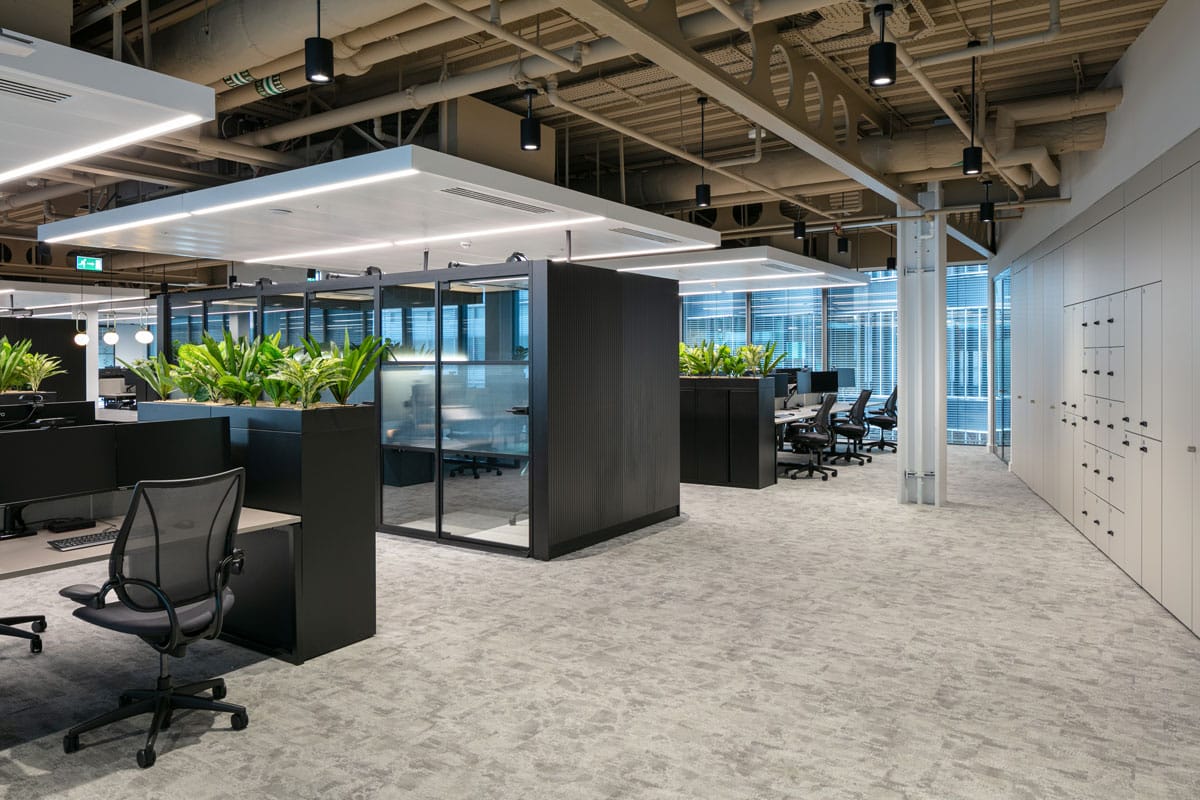Sustainability is no longer a buzzword—it’s a business imperative. As organisations strive to lower their environmental impact, carbon neutral office refurbishments are rising in demand. But what does it mean to go carbon neutral, and how can you realistically achieve this within your office fit-out?
This guide outlines practical steps to reduce emissions and offset the rest, creating a workspace that’s better for people and the planet.
What Does Carbon Neutral Mean in an Office Context?
Step 1: Audit Your Current Carbon Footprint
Before beginning a refurbishment, it’s crucial to understand your starting point. A professional carbon audit will assess emissions from energy use, materials, waste, and transportation.
By identifying hotspots, you can target the areas that will yield the most significant reductions. Many organisations also benchmark their performance using recognised standards like BREEAM or SKA Rating.
Step 2: Design with Low Carbon in Mind
Smart design decisions can drastically cut your project’s environmental impact. This begins with space planning that maximises natural light, encourages airflow, and uses existing structural features.
A key strategy is adaptive reuse—preserving and upgrading what’s already in place instead of ripping everything out. Repurposing existing fittings or furniture not only reduces waste but saves money too.
Step 3: Choose Sustainable Materials
Material selection is critical in reducing embodied carbon—the emissions associated with manufacturing and transporting building products.
Look for:
- Recycled or reclaimed materials, such as timber or aluminium
- Low-VOC paints and adhesives to improve indoor air quality
- Locally sourced products to cut transport emissions
- FSC-certified wood and cradle-to-cradle certified furnishings
Every sustainable choice contributes to a healthier, more responsible workspace.
Step 4: Select Energy-Efficient Systems
From lighting to heating, choosing the right building systems can make a measurable difference. Incorporate:
- LED lighting with motion sensors
- Smart HVAC systems with zoning controls
- Energy-efficient appliances rated A++ or better
- Renewable energy sources, such as solar panels where possible
These upgrades not only reduce emissions but lower operational costs in the long term.
Step 5: Reduce On-Site Waste
Minimising waste during the fit-out is essential. Work with contractors who operate waste management and recycling programmes. Segregate materials on site and track disposal rates to ensure minimal landfill contribution.
Whenever possible, donate unwanted furniture to charities or resale networks, rather than sending it to waste.
Step 6: Offset Remaining Emissions
Even the greenest refurbishments may result in unavoidable emissions. Carbon offsetting allows you to balance these by investing in projects that remove or reduce carbon elsewhere.
Common schemes include:
- Reforestation and afforestation
- Renewable energy generation
- Methane capture or clean cookstove projects
Ensure the offset provider is certified by bodies like Gold Standard or Verified Carbon Standard (VCS) to guarantee credibility.
Step 7: Communicate and Certify Your Efforts
Transparency is key. Share your sustainability goals with your team and stakeholders from the outset. Consider third-party certification to add weight to your claims—whether through BREEAM, SKA, or carbon-neutral labels.
This not only enhances your corporate social responsibility (CSR) but also strengthens your employer brand.
Final Thoughts
Going carbon neutral during an office refurbishment isn’t just good for the planet—it’s good business. From reducing operating costs to improving staff wellbeing and brand perception, the benefits are wide-ranging.
At ADT Workplace, we specialise in delivering future-ready office environments that align with your sustainability goals. If you’re planning a refurbishment and want to make it carbon neutral, our expert team can guide you through every step.

